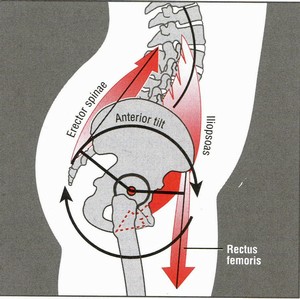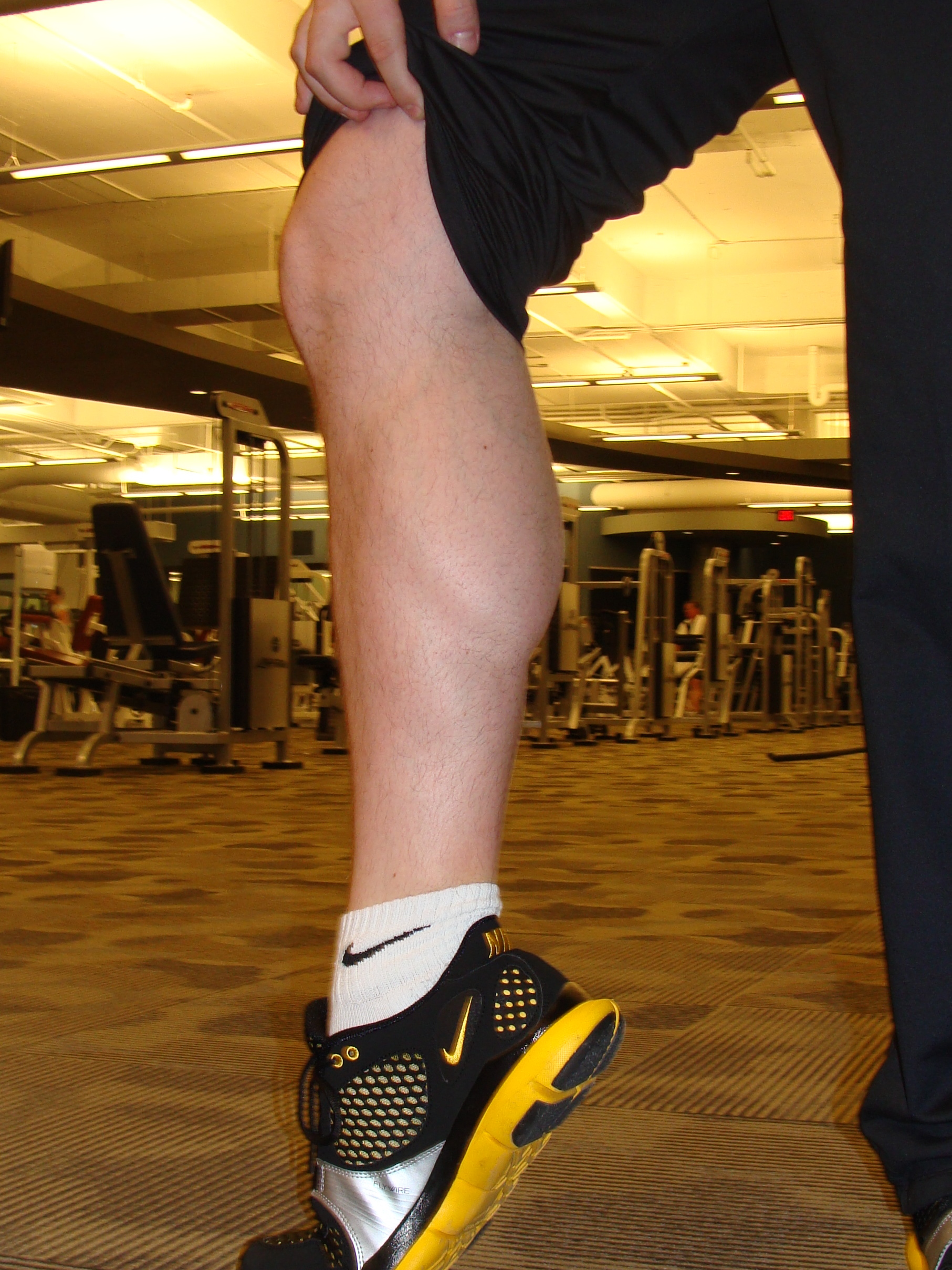Rectus?? It Nearly Killed Us!!! HA HA HA.
I was working with a chiropractor who sent me a couple of clients to train, and pretty much every one of them were listed as having problems with their “hip flexors”, and upon further consult with said chiro, it turns out pretty much 100% of his clients had some form of problem with their illiopsoas. Now, I’m not one to pick a fight (mmph!! Sorry, I couldn’t hold a straight face at that one either), but 100%?? Seriously?? Are there no other muscles in the human body that can’t be causing pain these days??
I think “hip flexor” pain has turned into a bit of a garbage term catch-all for any kind of pain that originates in the anterior hip, abdomen, low back, knee, left ear lobe, or iris of the eye. Sure, the movement and muscle mechanics are important, but there are more than one muscle that can be causing all the problems here.
Imagine you’re playing an important role in doing some sort of important task: head of a wicked-cool personal training company, test driver at the Lamborghini factory, Adriana Lima’s bikini waxer, whatever.
Now let’s say for hypothetical purposes, that you’re doing the best you can, and some other ass-hat who does the same thing gets all the credit and all the publicity, and what’s worse all the girls. That would kinda cheese you right off, wouldn’t it?? This is the kind of life the rectus femoris has.
Seriously, I think the world has (for a lack of a better term) a serious hard-on for the illiopsoas. They get all the credit for everything from anterior pelvic tilt to disc bulges to why Charlie Sheen shot off his nutter a few weeks ago. Boom!! Winning!!
Sure, they may be some powerful muscles, but what about the rectus femoris?? The illiopsoas connects to the transverse processes of all five lumbar vertebrae and connects to the lesser trochanter on the medial superior border of the femur,and causes hip flexion and some external rotation. Therefore it’s role in providing hip flexion is more of a stabilizer to the spine and pelvis to allow for flexion to take place without rotating the hips into a crazy anterior tilt. The rectus femoris attaches to the anterior inferior iliac spine at the bottom front of the pelvis, and to the knee cap through a long-ass tendinous aponeurosis, and causes hip flexion and knee extension. Check it out here.
From a positional standpoint, the rectus directly pulls the bottom of the front of the pelvis and would have a greater influence on pelvic tilting than the illiopsoas. If the illiopsoas was tense, the resultant action would place the femur in external rotation, a position that is not commonly found when the pelvis is placed in anterior tilt. The rectus, when short, has the propensity to pull the femur into internal rotation. I do believe that is check and mate, sir.
Since the hip flexors are crazy important in performance aspects like squatting, deadlifting, and flexing your calves for skinny-calved friends to become envious of…
….working on this specific difference is pretty important to making sure you can drop it like it’s hot, back that thang up, dip it low and pick it up slow, or whatever you want to call it.
The classic Thomas test, which is supposed to look at the hip flexor flexibility, has a few major flaws. A good friend of mine, Tony Gentilcore, looked at this crazy little dude a while ago in a couple of posts HERE and HERE. First, when the leg is draped over the side of the table, the knee is allowed to be passively flexed, which will cause the rectus femoris to become tight at the knee joint, restricting the movement capability through hip extension. Additionally, in the classic Thomsa test, there is little attention paid to whether the leg hangs in internal rotation, external rotation, or neutral. As the illiopsoas pulls the femur into external rotation, a leg hanging in this way would indicate a short or tight illiopsoas, but if the leg wasn’t hanging off kilter, we couldn’t necessarily assume this to be the case, right?? Fo Sho.
To test the illiopsoas more directly, testing the movement with the knee in full extension and the toe pointing in both internal and external rotation to try to elicit a pain or stretch sensation will give a better idea versus a false positive affected by the rectus femoris.
Conversely, if we were to see any kind of internal rotation with this test, it may indicate some form of tension through the sartorious, TFL, glute med, or other bags of happy on the butt.
Now I’m sure you’re going to ask: What the hell was the point of this post?? Well, my good-natured readers, the point was that if we continuously chase a muscle imbalance that is commonly believed to exist in a large segment of the population without looking alternative possibilities, we’ll wind up chasing symptoms instead of finding solutions.
Now that we’ve gone through whether a tight hip flexor is the result of a tight illiopsoas or a tight rectus femoris, let’s look at what the hell we should do with those little buggers.
If we’re looking to stretch either one, there’s two slightly different methods to use. For the illiopsoas, stretching into hip flexion with an internal rotation of the femur, and with an ipsilateral lean and reach, meaning bring the same arm up and back, tends to hit the shit out of that muscle.
If we’re looking to train the illiopsoas without getting the rectus involved in the mix, we need to train hip flexion with some form of knee bend to remove the influence if the rectus, and also with some form of external rotation. Commonly you can do this with a bent knee raise while ensuring there is some form of spinal support to limit pelvic tilting. To train the rectus, simply lock out the knee while performing the exercise and rollin up on that thang with an anterior pelvic tilt.
So in conclusion, my dear friends, there is commonly more than one muscle that can cause any movement, so testing should look at all the possibilities, not simply the ones that are the most commonly believed. The chiropractor I work with who has a 100% illiopsoas population will have to forgive me for finding those with rectus femoris issues and working with them differently than those with illiopsoas issues. Plus, it makes me look way to rediculawesome when I can chat with a chiro and tell him what time it is.





15 Responses to Rectus?? It Nearly Killed Us!!! HA HA HA.